Although there is a clear move by many cities to recognize that nature is essential to enhance their resilience to face climate challenges, there is still a lack of a wider understanding of the immense benefits they may bring to urban environments.
After more than 15 years of teaching, researching, consulting, and advocating for nature-based solutions (NBS) in Brazil, it’s really fulfilling to see NbS becoming nationally recognized and adopted in several Brazilian cities.
In this essay, I present my view of the process that led to this moment. It has had ups and downs, successes, and frustrations (especially related to the city of Rio de Janeiro, which up to this date has ignored NbS in urban public plans, programs, and projects). I will focus on the ups and successes. To wrap up, I present two cities that are front runners in Brazil.
Learning, educating, and raising awareness about nature in cities
The first time I had contact with green infrastructure concepts and applications was in a workshop at the University of São Paulo (USP), organized by Prof. Paulo Pellegrino and the American landscape architect Nate Cormier in 2006. Paulo has been one of the pioneers in teaching and researching landscape ecological planning (ELP), he is co-coordinator of the LabVerde (Green Infrastructure lab that is responsible for the ―a scientific journal). I met him in a master’s program in 2005, when he invited Prof. Jack Ahern from UMass for an intensive course on ELP at USP. I believe this class was a seed that germinated and flourished in other universities in Brazil.
Some of the actions I have participated in during recent years in Brazil are:
In 2009, I co-founded the Inverde Institute to educate and advocate for the need of nature for sustainable and resilient cities. I have written about our work in previous pieces here, at the TNOC. We have contributed to spreading the word on green infrastructure and contemporary ecological and social challenges with 4 years of monthly lectures with Brazilian and international invited speakers and roundtables, around 10 years of seminars and several short courses, and active participation in the Environmental Council of Rio de Janeiro City, among other initiatives.
I launched a Master’s program on at the Pontifical Catholic University of Rio de Janeiro, together with in 2016. The course was interdisciplinary, with the participation of professors from diverse departments of PUC-Rio: geography, biology/ecology, social services, law, and my department: architecture and urbanism. Also, we had the contribution of Osvaldo Rezende, professor of hydrological engineering at UFRJ (Federal University of Rio de Janeiro). Several lecturers came to talk about soil, urban mobility, urban agriculture, and sustainable cities (e.g., C40 and ICLEI representatives), among other relevant themes. Many of our former students are working in city departments and in other organizations related to NBS.
During the pandemic (2020-2021), we organized with national and international invitees, when the university had more than 2.600 registrations. People from all over the country and abroad attended.
Nature-based Solutions taking central stage in the last years
The synergy with other initiatives started to fructify in 2018 when I was invited to collaborate on and III on NBS, promoted by the European Commission―Directorate-General for Research and the Ministry of Science, Technology, Innovation, and Communications. Two bilingual publications, in Portuguese and English, were products of those dialogues. The first is (2019) and the second is (2022). Both are available for download. The first two seminars on NbS that happened in Brasilia in 2018 and 2020 were under the umbrella of the Sector Dialogues, in collaboration with other organizations.
There were two more recent international webinars on NBS organized by the Centro de Gestão e Estudos Estratégicos (Center for Strategic Management and Studies―CGEE), and several active partners that focus on NBS in Brazil. The 4 presential and online events have reached hundreds of city officials, decision-makers, academia, researchers, and other people interested in the theme.
The is a platform that has a wide reach and one of its themes is NBS, with several case studies in Brazilian cities. It has also been an important means of dissemination. The initial case studies that are listed on their website are also products of the Sector Dialogue III.
Several organizations, Brazilian and international are responsible for diverse actions and programs to develop NBS in cities: Fundação Grupo Boticário de Proteção à Natureza (FGB ― Foundation Boticário Group for Nature Conservation), CGEE, Rede Brasil do Pacto Global da ONU (ONU Global Compact Brazilian Network), ICLEI (Local Governments for Sustainability), a Plataforma Brasileira de Biodiversidade e Serviços Ecossistêmicos (BPBES ― Brazilian Platform of Biodiversity and Ecosystem Services), o WRI Brazil (Word Resources Institute, o Painel Brasileiro de Mudanças Climáticas (PBMC ― Brazilian Panel of Climate Change) and The Nature Conservancy Brazil (TNC). They constituted the Bioconexão Urbana (Urban Bioconnection), a consortium that targets to accelerate NBS, give more visibility, and reach wider audiences and more cities.
A new product of the Bioconexão Urbana is an NBS Guide for the media. The consortium is doing a countrywide research on the perception of the Brazilians regarding climate change and nature-based solutions. Also, they are interviewing 100 city managers to understand what they think about climate change and if NBS is part of the solution. The results will be presented at CoP 28, UN Climate Change Conference, at the end of 2023.
WRI and FGB have launched to prepare city officials to develop urban projects to be funded. The call received about 80 proposals of NbS in ideation in Brazilian cities, the number of applications was astonishing for the expectations. For phase 1, ten projects were selected by a jury to be further developed with the technical support of specialists in all areas. The final two selected projects are now in phase 2 until April 2024, with the support of experts in financing.
Those are some of the initiatives that are underway in Brazil.
Campinas and Niterói: two front-runner cities
I chose the two cities because I have been following their engagement and continuous commitment, and work for urban enhancement with the introduction of nature-based solutions.
Campinas
Campinas is the third most populated city of the State of São Paulo with more than 1.2 million inhabitants, located about 100 Km from the State Capital, São Paulo city―the largest Metropolitan Region of South America with more than 22 million inhabitants. The city has been one of the pioneers in Brazil to address and plan for biodiversity and nature-based solutions to adapt to climate challenges and the need for environmental justice. Plans, programmes, and actions are progressive and being implemented on multiple scales.
Campinas Metropolitan Region (RMC) is composed of 20 municipalities. Reconecta RMC program is led by Campinas with all other municipalities, the aim is to restore the metropolitan ecological infrastructure through the riparian corridors of the regional rivers by ‘promoting local fauna management and biologic diversity; recovering riparian corridors, protecting and restoring water springs and ecological corridors; enhancing existing protected areas and create new ones, with better conservation units management (including new ones), and conserving strategic forest remnants. In this manner, the region will have increased water security and resilience to face climatic events. It has a ground-breaking ‘Action plan for implementation of the Connectivity Area of the Metropolitan Region’ (Plano de Ação para Implementação da Área de Conectividade da Região Metropolitana de Campinas) (Fig. 1). This plan was elaborated in collaboration with ICLEI and WRI, it is a comprehensive green infrastructure plan, with multiple NBS to be implemented in all cities of the Metropolitan Region. This program is part of the Campinas Metropolitan Region Urban Integrated Development Plan (Plano de Desenvolvimento Urbano Integrado da Região Metropolitana de Campinas), still not approved by the State Representative House. It is a systemic program, that oversees the complexity of the social-ecological-technological regional system, and the potentialities to achieve the desired objectives to adapt to the changing climate with a focus on biodiversity enhancement to provide numerous ecosystem services with multi-scale reach.
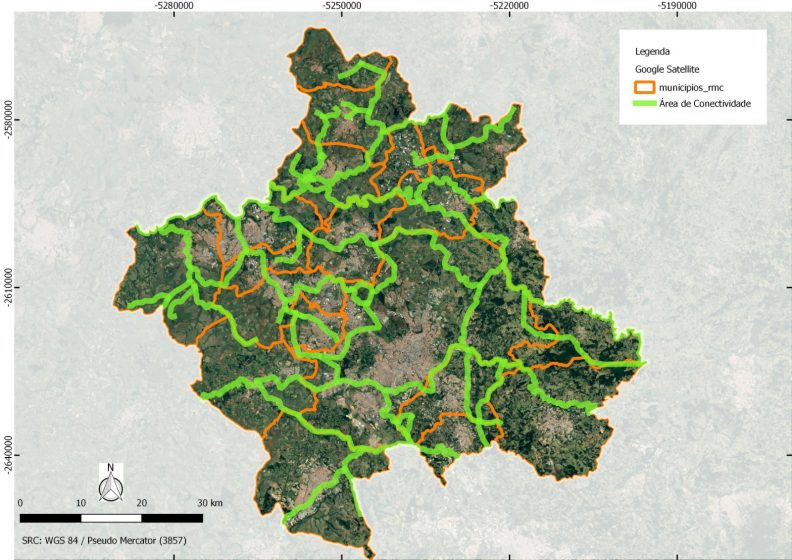
The Municipal Strategic Master Plan (Plano Diretor Estratégico do Município de Campinas, lei 189/2018), incorporates the protection, enhancement, and connectivity of the biodiversity in the city.
A new NBS and environmental resilience municipal plan will soon be released. The spatial plan aims to be systemic and has been elaborated with the transversal participation of all 27 city departments, as well as diverse public and private stakeholders and residents. Once the plan is created by Municipal Decree to guarantee long-term reach (independence of the political shifts), it is flexible and adaptable during the process of elaboration only, but it is a long-term plan.
The city of Campinas has a plan of 43 linear parks along urban rivers to build an urban green infrastructure, which was developed after mapping the areas with less green areas and the lower family income. The parks aim to offer better and more resilient environment for their inhabitants once they are planned for the poorest populated neighbourhoods. The first is already implemented.
Sustainable Development Goals (SDGs) have been addressed in the new plans and programs, also they are aligned with regional, national, and international progressive agendas (highlighting NBS).[i]
Niterói
Niterói is located in front of Rio de Janeiro city, on the other side of the Guanabara Bay. It has almost 500.000 inhabitants, in an area of 1290,3 Km², only 2 meters above sea level in the lower areas. It is an important city in the Metropolitan Region of Rio de Janeiro.
In the last few years, the city has focused on sustainable development in expanding areas. The program, has started to enhance urban mobility and the ideation to requalify the Jacaré River that contributes to the Piratininga Ocean Lagoon. The river restoration faces many challenges once it flows through urbanized areas that are illegally occupied and the legislation doesn’t allow removing people from their homes, even if they are in vulnerable areas.
The most ambitious fully implemented NBS project in Brazil up to this date is the Parque Orla de Piratininga (POP―Piratininga Lagoon Front Park―named Alfredo Syrkis, after the death of this green activist and politician) (Fig. 2). The lagoon receives polluted waters from its affluents, being the Jacaré River the main one. It had a circular canal that captured the contaminated waters before flowing to the lagoon. The water body was polluted and hidden from the residents by tall grasses and invasive plant species, it was very neglected. The urbanized area has a diversity of social income in diverse residential clusters and, in some parts, the parallel power (militia and drug dealers) is still present.
The development of the park is very inspiring for students and professors. In 2017 Raquel Cruz, a student of the PUC-Rio Master Program on Landscape Ecological Planning and Design, proposed a multifunctional park in her final project. At that time, she worked for Niteroi, starting as an intern, after some years she became the Director of Urban Ecology and Climate Change of Niteroi, as the Secretary of Environment, Water Resources, and Sustainability. Her proposal was the seed for the recently implemented park. It has an area of 685,000 m², with built wetlands that treat the polluted waters that flow from the rivers (Fig. 3), bioswales to collect the contaminated run-off from the streets, and a myriad of recreational, sportif, and cultural activity areas. It is a successful and inspiring case that has gained a lot of visibility nationally and internationally. Has so far, received the awards: Sustainable Cities 2023 (Fig. 4) and Smart Cities Congress Mexico City, and was a finalist in the 2023 Green Infrastructure World Congress (WGIC ― Berlin).
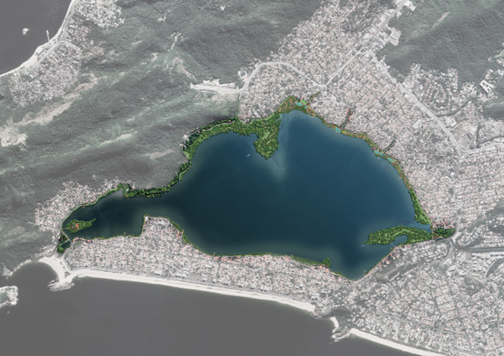
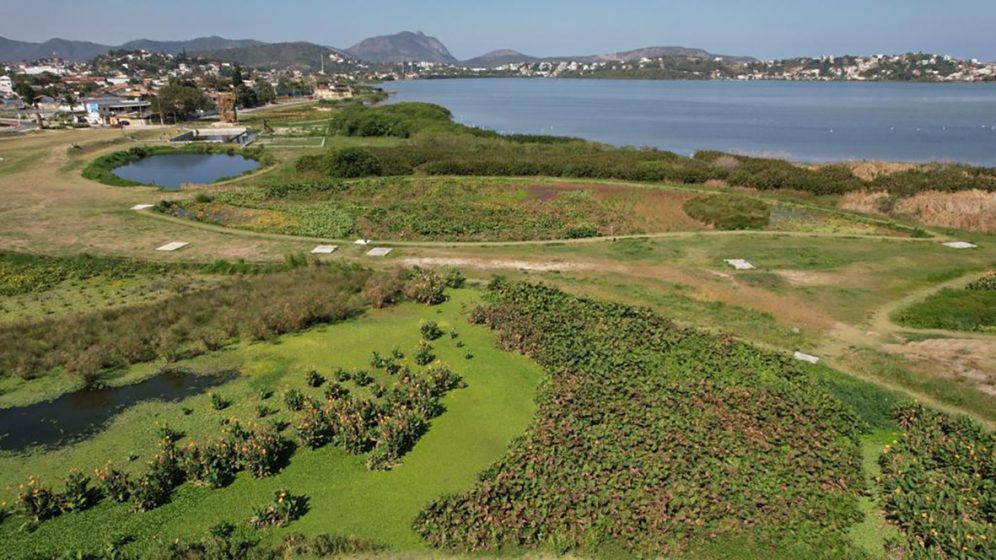
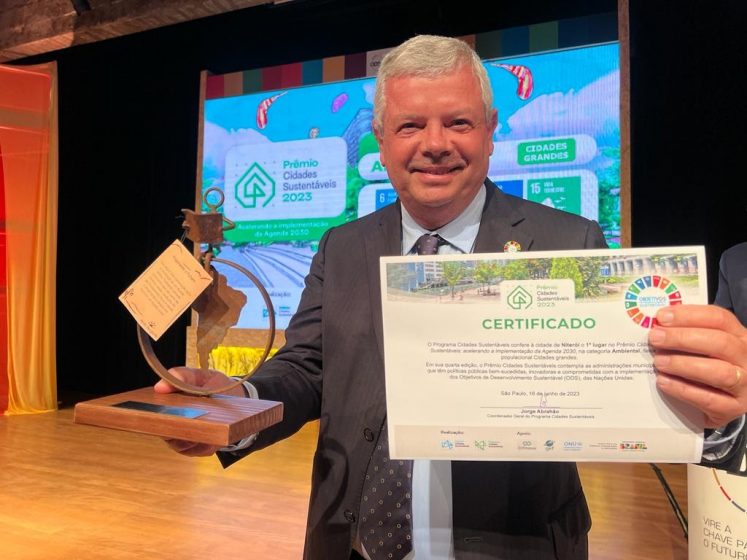
In both cases, Campinas and Niterói, urban residents were actively engaged with workshops and other means of interaction. The involvement of citizens is critical so they can value and praise the urban greening, giving sustainability to the implemented projects.
Final thoughts
Climate crisis is impacting cities all over the world, and in Brazil, the outcomes are especially dramatic. Nature-based Solutions are gaining more relevance once the decision-makers understand their potential to build urban resilience and offer a better quality of life and well-being to their residents.
As it is mentioned above, diverse institutions are devoted to enhancing the knowledge and skills of public servers and decision-makers, motivating them to adapt to the changing climate to face the current social, ecological, and economic challenges through the introduction of biodiversity, opening room for rivers and creeks, increasing permeable areas in the urban built desert. The results are fructifying, qualified and committed city officials are pushing NbS agendas all over the country.
Although there is a clear move by many cities to recognize that nature is essential to enhance their resilience to face climate challenges, there is still a lack of a wider understanding of the immense benefits they may bring to urban environments. Residents, decision-makers, and other relevant actors need to be educated to value nature in cities, developing their biophilia and systemic understanding of the challenges we are facing. It is beneficial not only to their close environment, but it is also essential to contribute to a paradigm shift to a regenerative culture.
Cecilia Polacow Herzog
Rio de Janeiro/Lisbon
[i] More about Campinas NbS actions: Neves, G.D.M. et al. (2022). The Implementation of Connectivity Area in the Metropolitan Region of Campinas (São Paulo, Brazil): Biodiversity Integration Through Regional Environmental Planning. In: Mahmoud, I.H., Morello, E., Lemes de Oliveira, F., Geneletti, D. (eds) Nature-based Solutions for Sustainable Urban Planning. Contemporary Urban Design Thinking. Springer, Cham. https://doi.org/10.1007/978-3-030-89525-9_7


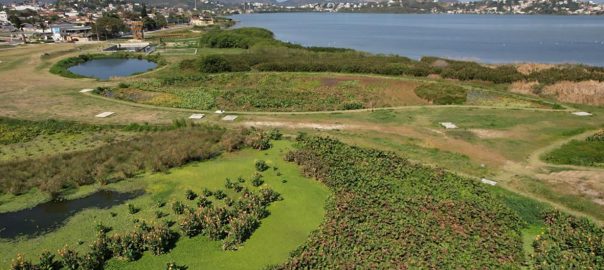
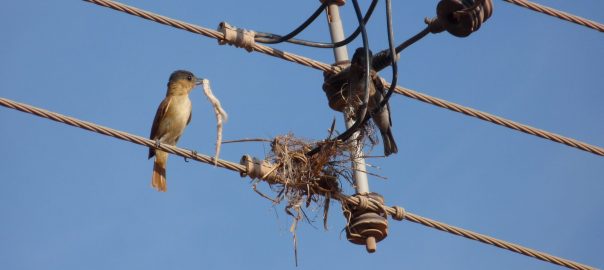
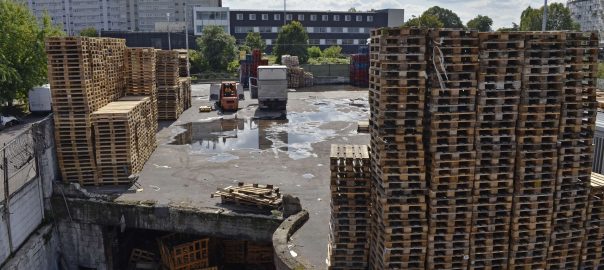
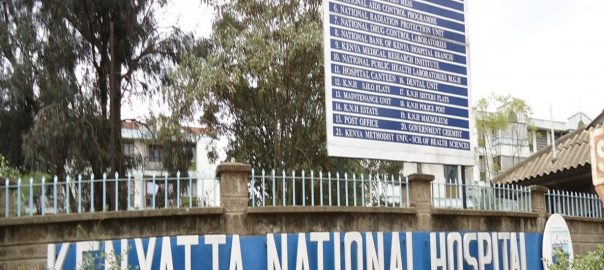
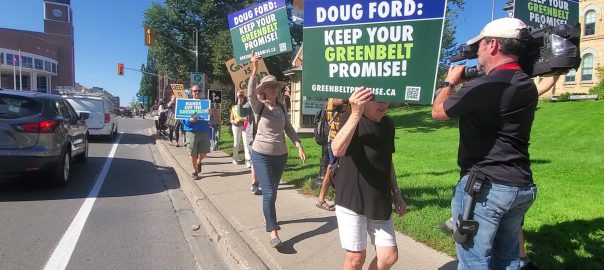
Leave a Reply